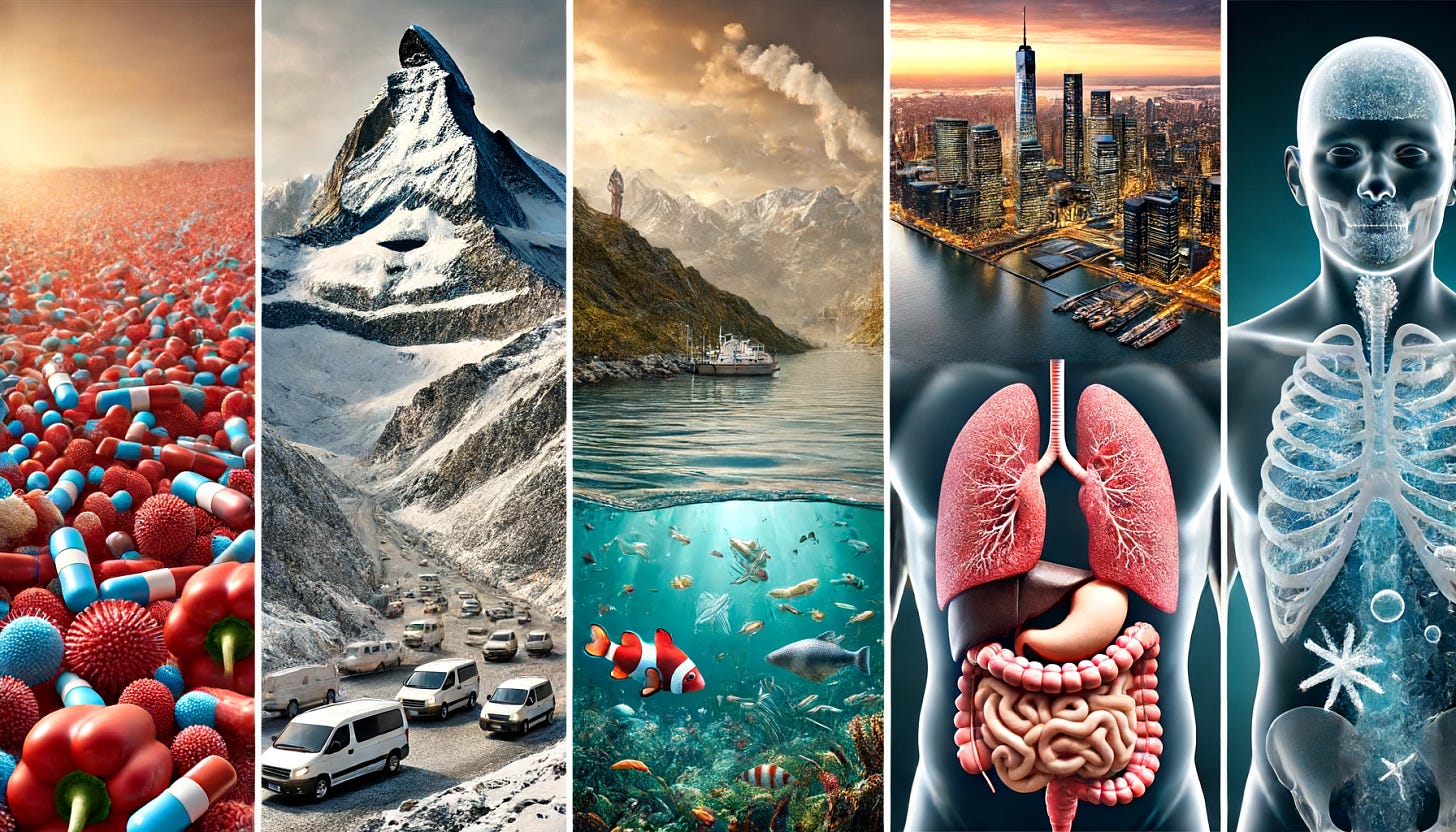Microplastics in the Age of Microelectronics and Microwaves: Perils and Paranoia
It is essential to approach the issue with caution, recognising the seriousness of the problem, but not succumbing to paranoia.
The Ubiquity of Microplastics: From Mountaintops to Human Bodies
From the highest peaks of the Himalayas to the depths of human testicles, microplastics have infiltrated virtually every corner of the globe. The growing presence of these minuscule plastic particles in our environment and bodies is raising significant concerns among scientists and health experts. This article delves into the pervasive nature of microplastics, their potential impacts, and what steps can be taken to mitigate their presence.
The Ubiquitous Nature of Microplastics
Microplastics are omnipresent, found in everything from food containers to clothing. These tiny fragments, often less than 5 millimetres in length, can break away from larger plastic items through regular wear and tear or be purposefully included in products such as toothpaste and exfoliant creams. Consequently, microplastics have found their way into our oceans, air, food, and water supplies. A study has revealed that people may inhale and ingest up to 113,743 of these invisible particles annually, with fish, bottled water, and salt being particularly common sources of microplastic contamination. Alarmingly, microplastics have been detected in human blood, the gastrointestinal tract, liver, lungs, and other vital organs.
What Does Science Say?
The potential health effects of microplastics are still not fully understood. However, there is evidence suggesting their harmful impacts. In marine environments, microplastic contamination can disrupt ecosystems, while on land, it may reduce soil fertility by affecting the organisms living in it. For human health, the primary concern lies with plastic nanoparticles, which are small enough to penetrate cellular barriers and potentially enter the brain. Plastic’s prolonged degradation period means that these particles can accumulate in our bodies over time. Plastics contain a variety of toxic chemicals, including flame retardants, which are detrimental to human organs.
Although direct health impacts are not fully established, associations have been found between microplastics and health issues in mice, such as intestinal inflammation and cognitive decline. One study involving patients undergoing a procedure to reduce stroke risk discovered that individuals with microplastics in a main artery had an increased risk of heart attack, stroke, and death. Furthermore, multiple studies have identified microplastics in human semen, prompting questions about their role in declining sperm counts globally. Despite these findings, experts caution that there is insufficient evidence to definitively link microplastics to specific health issues. More research is needed to separate the effects of microplastics from other factors influencing health, such as socioeconomic status and exposure to various substances.
Microplastic Pollution in India: Current Research and Emerging Concerns
Recent studies and news articles have highlighted the state of microplastic pollution research in India, revealing a predominant focus on marine and coastal environments, with fewer studies on freshwater, terrestrial systems, and human consumables. A 2023 review identified research gaps and proposed a roadmap for future studies. Notably, microplastics, mostly fibers, were detected in southwestern India's mangrove ecosystems, with concentrations lowest during the monsoon season. Another 2023 review found that Indian rivers and lakes, compared to marine environments, are underexplored regarding microplastic sources, transport, and fate, with common types including polypropylene, polyethylene terephthalate, and polyethylene.\
A March 2024 study warned of high-hazard polymers in microplastics posing risks to the Indo-Gangetic plain, detecting potentially toxic chemicals in the Ganga river system. A January 2024 news article highlighted the pervasive presence of microplastics in India's environment, contaminating food, water, and air, and raising concerns about their entry into the human body. While microplastic research in India has increased, there is an urgent need for more studies on freshwater and terrestrial ecosystems to fully understand the sources, pathways, and impacts of this emerging pollutant, given the potential ecological and health risks.
What Can You Do?
Completely avoiding plastic exposure is nearly impossible, but there are measures you can take to minimise contact with microplastics:
Replace Plastic Items: Use glass containers, kitchen utensils, and water bottles instead of plastic ones. Avoid microwaving food in plastic.
Reduce Processed Food Intake: Processed foods are more likely to come into contact with plastic during production.
Limit Plastic Purchases: Buy fewer plastic items and store them away from direct sunlight, which accelerates degradation.
Improve Home Hygiene: Regularly vacuum and ventilate your living space to reduce airborne microplastics.
Government Actions and Global Initiatives
Governments are beginning to address the issue of microplastic pollution. The European Commission has banned the intentional inclusion of microplastics in products such as non-biodegradable glitter. Additionally, United Nations member countries are negotiating an international treaty aimed at reducing plastic pollution, with hopes of finalising the agreement by the end of the year.
Urgent Need for Research and Policy Action
Animal and cell studies suggest that microplastics can cause a range of adverse health effects, including oxidative stress, DNA damage, organ dysfunction, metabolic disorders, immune responses, neurotoxicity, and reproductive issues. While further research is necessary to confirm these effects in humans, there are significant concerns that microplastics could act as carriers for other toxins and pollutants, such as PCBs, heavy metals, and endocrine disruptors, amplifying their health impacts.
Inhalation and ingestion are the primary routes of exposure, with microplastics found in air, dust, water, food, and everyday products. Infants may face high exposure levels from baby bottles. Scientists are urgently working to understand how diet, lifestyle, and environmental factors influence microplastic uptake and health effects. The emerging evidence underscores the need for increased research, public awareness, and policy action to address the pervasive issue of microplastic pollution and transition to more sustainable materials.
Summing Up and Looking Forward: Caution, Yes; Paranoia, No
The pervasive presence of microplastics in our environment and bodies is undeniable and concerning. While the full extent of their impact on human health remains unclear, the evidence so far suggests potential risks. By taking reasonable precautions and supporting governmental and international efforts to reduce plastic pollution, we can mitigate these risks. It is essential to approach the issue with caution, recognising the seriousness of the problem, but not succumbing to paranoia. With informed actions and continued research, we can strive for a healthier, less polluted world.
If you believe this article would interest someone you know, please feel free to share it anonymously (for us), using any platform that you prefer.





